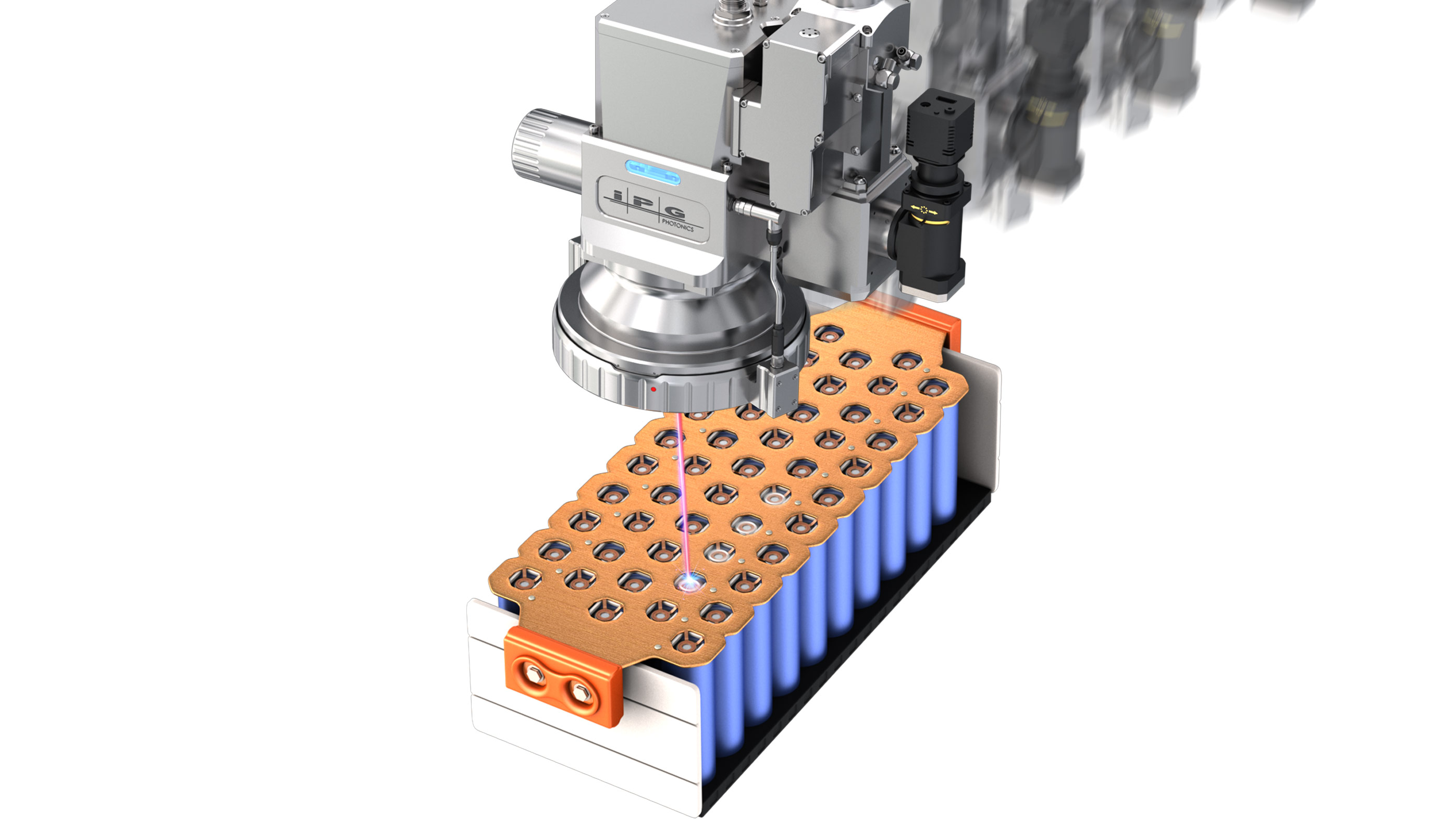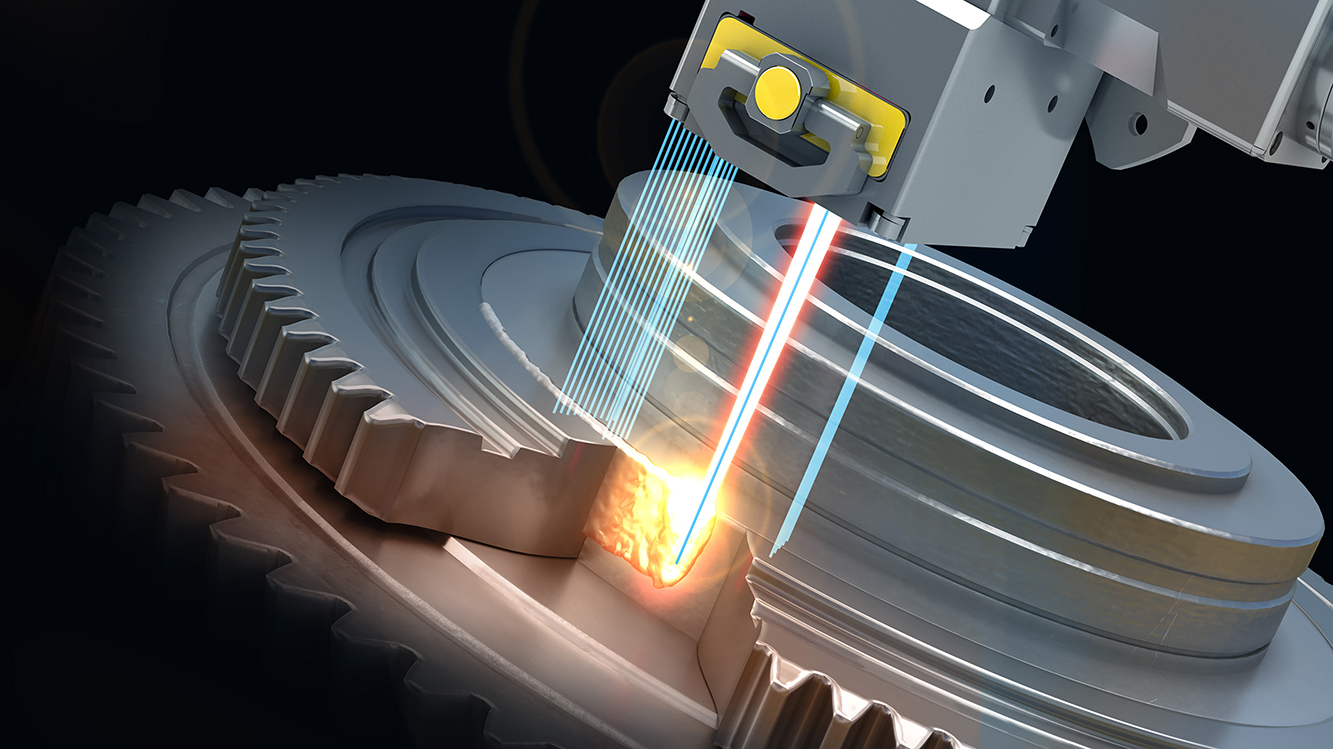In general use, the term "on-the-fly" refers to performing tasks dynamically and in real-time, without halting or interrupting the overall process. In the world of automated manufacturing, on-the-fly laser welding embodies this concept by enabling continuous welding while the workpiece or welding head remains in motion.
As industries continue to push for faster, smarter production, this welding method is gaining traction in advanced manufacturing environments. This article will explain what on-the-fly laser welding is, how it works, and the key benefits it offers to manufacturers.
What is On-the-Fly (OTF) Laser Welding?
On-the-fly (OTF) welding, also referred to as welding on-the-fly and sometimes scanner welding, is an automated laser welding process that uses a laser scanning system to make welds while the welding process head or the target components are continuously moving.
It is necessary to first examine other common automated laser welding methods to understand the basic principle of on-the-fly welding. These methods can be thought of as “stop-and-start" approaches to laser welding.
High Speed: Stop-and-Start Laser Welding with a Fixed Welding Head
The simplest and most common method of laser welding, fixed laser welding heads direct the beam to a stationary position directly beneath the optics. There are some exceptions, primarily for welding heads designed for “wobble welding” that use a small field of view to create weld seam patterns.
To make welds larger than the beam’s spot size or to make a series of individual welds, it is necessary to either move the fixed welding head or the parts being welded. The former is more common, as it is fairly easily achieved.
Higher Speed: Stop-and-Start Laser Welding with a Scanning Head
Also known as scanners and galvo scan heads, laser scanning heads use a galvanometer to deflect laser beams via rotation of a series of carefully placed mirrors. This design enables the beam to be guided or “scanned” across a wide field of view. This allows scanning optics to create long seams, complex weld patterns, and many individual welds while both the scanning head and parts remain stationary.
Scanner welding is commonly used for advanced and high throughput applications like battery welding. But, while welding with a scanning head reduces how often a system must come to a stop, it does not eliminate the need entirely. Additionally, welding at the edges of a scanning head’s field of view causes subtle distortions in the beam’s focus, which can cause problems in high-precision applications with tight process windows.
The challenges faced at the edges of the field-of-view can be reduced by using only a small portion of the scanner’s field. This creates a more uniform spot but requires repositioning the scanner more frequently to cover the welding area. Repositioning the scanner is a relatively slow process that significantly reduces overall throughput.
Highest Speed: On-the-fly Welding with a Scanning Head
Fortunately, the power of laser scanning can be further enhanced to allow the creation of complex weld patterns while the optics are in motion or parts move beneath them. This method greatly reduces how often the system must come to a stop.
When using a laser scanning head for on-the-fly welding, typically only a narrow portion of the field of view is utilized. In other words, the optics are kept mostly directly above the welding target, even while system elements are in motion. This virtually eliminates distortions in the laser spot’s characteristics caused by directing the beam to the edges of the scanner’s field of view.
Since on-the-fly welding dynamically adjusts both the laser beam’s focus and its path, this method also makes it possible to automatically account for part height variations and three-dimensional part geometries without changing the scanning head’s relative distance from the part.
How On-The-Fly Welding Works
When welding while the scanner or parts are in motion, the beam pattern created by the optics has to compensate for that motion. This requires intimate integration of system components.
For high accuracy, high throughput applications like battery welding, a gantry-scanner combination is often optimal. In this example, the scanner controller tracks the position and the velocity of the scanner and compensates the beam trajectory to create the correct weld shape at precisely the right location. While traditional scanner welding techniques have the comparatively simple task of “drawing” the desired shape from a fixed position, on-the-fly welding must guide the beam along a path that differs from the final weld based on real-time calculations.

To illustrate this concept, consider a circular weld seam, a fairly common shape in scanner welding applications. As shown on the left in the picture above, scanner software guides the beam to create a loop shape. The resulting final weld shown on the right is the desired perfect circle.
The specifics of how beam paths and beam speeds are calculated depend on a variety of factors like speed, trajectory, and the desired shape of the final weld. The type of motion – gantry, robotic, or conveyor – is also important.
Benefits of On-The-Fly Welding
Increased efficiency & throughput: By dramatically reducing the required number of starts and stops, on-the-fly welding effectively eliminates non-productive intervals that would otherwise be dedicated to changing the positions of parts or optics. For production lines that must weld high volumes of individual parts, make many welds on the same part, or make many long, continuous welds, it is typically possible to multiply productivity several times over with on-the-fly welding.
Enhanced precision & reliability: on-the-fly welding continuously calculates and adjusts welding parameters to account for continuous motion. As a result, the laser beam is precisely targeted while maintaining optimal beam properties. Additionally, since the scanning head uses a limited field of view, welding results are more consistent and predictable, making it easier to remain within narrow process windows.
Flexibility: on-the-fly welding can be used while the scanning head is in motion in applications where many individual welds must be made on a large part, such as for battery busbar welding. OTF welding can also be used while the scanning head remains stationary and many smaller parts are moved underneath, such as for welding individual battery cells traveling along a rotary conveyor.
Additionally, on-the-fly welding works with both 3-axis gantry and cartesian system motion as well as with robotic system motion.
Compatibility with other laser welding technologies: on-the-fly welding can be used with other beneficial laser welding technologies that alter beam characteristics and monitor the welding process.
For example, on-the-fly welding is compatible with dual-beam lasers that improve weld quality and reduce spatter. OTF welding can also be integrated with real-time direct laser weld measurement, a form of process monitoring that helps manufacturers track key weld characteristics like weld depth.
The Current Capabilities of On-The-Fly Welding
On-the-fly welding technology is offered by a limited number of laser technology providers. The advanced calculations and programming that power on-the-fly welding mean that, while powerful, exact capabilities and functionality are closely guarded.
In the case of on-the-fly welding technology developed by IPG Photonics, welding speeds of up to 1,000 welds per minute have been demonstrated, even when welding more complex weld patterns like spirals.
IPG on-the-fly welding technology is also uniquely compatible with both single-mode dual-beam AMB lasers and LDD real-time weld measurement (patent pending).
What Industries & Applications Benefit from On-The-Fly Welding?
On-the-fly welding is a relatively new technology, but it offers significant productivity, quality, and reliability benefits for a variety of industries and applications.
EV & battery welding: utilized by some of the world’s largest electric vehicle manufacturers, OTF welding is a natural match for the extremely demanding throughput and precision requirements of the e-mobility and battery industry.
On-the-fly welding, particularly in conjunction with dual-beam and real-time weld measurement technologies, is a powerful welding method for applications like battery cell-to-busbar welding, lid-to-can welding of battery cells, battery cold plate welding, and bipolar plate welding for fuel cells.
Automotive: while related to the EV industry, the automotive industry as a whole also benefits from the improved production capabilities offered by on-the-fly welding. OTF welding is well-suited for the body-in-white welding of sheet metal components. OTF welding is also promising for welding various other automotive parts used in vehicle engines and transmissions.
Aerospace: many of the same benefits OTF welding offers can be applied to the wide variety of welds required in the aerospace industry. Similarly to the e-mobility industry, the aerospace industry often requires both high throughput and high precision.
General manufacturing: as a flexible welding method used for both micro-welding and structural welding, on-the-fly welding is well-suited for many general applications that benefit from increased productivity.
Getting Started with On-The-Fly Welding
IPG on-the-fly welding technology is a key component used in high productivity laser welding solutions. Interested in learning more about how on-the-fly welding can benefit your application?
Getting started is easy – send us some sample parts, visit one of our global application labs, or just tell us about your application.





